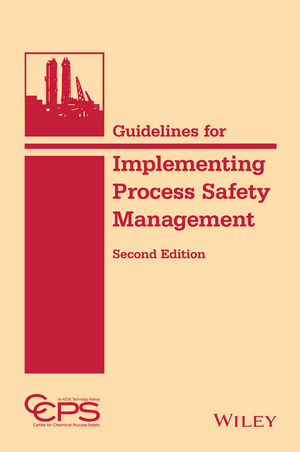7 best practices for walkway protection under scaffolding

Getty Images
Scaffolding is a critical but hazardous component of many construction worksites. Safety managers must take several precautions when setting up and using this infrastructure for the workers on it and anyone passing underneath.
Fall injuries may be the most obvious scaffold-related hazard, but they’re not the only one. Debris and objects falling from scaffolds can hit passersby underneath. Considering struck-by incidents caused 150 deaths and 14,000 injuries in 2020 alone — and that does not include pedestrians passing through jobsites — these risks demand attention.
Thankfully, walkway protection under scaffolding is relatively straightforward once you know what to look for. Here are seven best practices to follow for safer worksites.
1. Secure scaffolding bases
Scaffolding safety begins before workers even erect these structures. The most important consideration for walkway protection is securing the base to minimize tipping hazards.
OSHA requires any scaffold with a height-to-base-width ratio of four to one or higher to have tipping restraints. That can include tying legs to sturdier infrastructure, bracing it against heavy weights or any equivalent method. Regardless of the specifics, you must be sure the scaffolding can withstand more force and weight than you expect it to encounter without falling.
Suspension scaffolds don’t have bases to secure, but you should use enough support lines and inspect them to ensure they’ll hold the structure. It’s also best to use counterweights to further prevent tipping risks.
2. Set up guardrails and toeboards
As workers erect the scaffold, they must ensure it has the necessary guardrails and toeboards. OSHA requires such protections on anything above 10 feet, but they’re a good idea even on lower structures. Regulators may intend these guards as a way to stop employees from falling, but they serve an important secondary purpose of protecting people below from dropped objects.
A sufficient toeboard makes it harder for hand tools or materials to roll off the platform and drop onto a passerby. Along those lines, it’s also best to address holes or gaps in the structure’s flooring. Using planks instead of a metal grate ensures nothing will slip through the bottom and endanger anyone walking underneath.
3. Inspect scaffolds before the workday begins
As with most equipment, scaffolding requires a thorough inspection before use. A well-trained, experienced worker should look over the structure before anyone is allowed to climb or place anything on it. Reviews should include looking for rust, bent metal, broken fasteners, fraying support cables, and other signs of structural damage or weakness.
Teams need a formal process for reporting and responding to defects discovered in these checks. While specific protocols can vary between jobs, they must include a rule to fix the issue before anyone can use the scaffolding and a chain of command for communication.
It’s also best to inspect scaffolding after the workday. That way, teams ensure no new hazards have arisen that may endanger pedestrians walking by during off hours.
4. Set up debris netting
Debris netting is another crucial factor in walkway protection. Accidents can still happen, even with toeboards and careful workflows, causing material to fall below the scaffold. A debris net will catch these hazards so they don’t hit anyone walking below.
Even a 1-pound object can cause serious injury if falling from a height of 6 feet or more. Consequently, safety netting is essential regardless of the size of a project’s tools or materials.
Debris nets should extend several feet beyond the edge of the scaffolding to provide maximum coverage. They should also be able to withstand far heavier loads than you expect them to encounter during a normal workday. Any holes in the netting should be smaller than the smallest tools used, but ideally, worksites will use canvas or hard canopies instead of a simple net.
5. Use debris chutes
A similar protection to consider is the debris chute. Unlike safety nets, which catch unintentional falling objects, debris chutes provide a way for workers to safely dispose of excess material.
These chutes typically consist of a flexible tube running along the scaffolding and gently sloping toward a designated waste pile. Ideally, this should be a dumpster or movable container to enable easier cleanup. It could also be little more than a dumping zone, as long as workers clear it into dumpsters regularly.
Not every project needs such a system. For example, they’re unnecessary for scaffold operations that don’t involve removing material. However, any material-intensive workflow or demolition task should use debris chutes to minimize falling object hazards.
6. Train all employees
Employee training is also crucial, as it is in all construction workflows. Human error plays a role in almost all workplace safety incidents despite being relatively easy to address. Given that risk, all workers, regardless of experience, need a refresher on scaffolding best practices before work begins on a site.
Employees setting up scaffolding must review OSHA regulations and industry guidance for tipping prevention and safe construction practices. Likewise, anyone working on these structures should receive training on safely disposing of material and keeping objects away from the platform’s edge. Reminding workers to keep an eye out when walking underneath scaffolding is also a good idea.
7. Post appropriate signage
Worksites must post clear signage indicating fall hazards near every scaffold covering a walkway. While warning signs are not a perfect solution, studies show they increase awareness around hazards. In the context of under-scaffold walkways, these are particularly important as a way to alert nonemployees who may pass through and be unaware of falling object risks.
Signs should indicate that materials may fall from the platform and be visible before passersby are below the scaffold. You can improve sign visibility by using larger lettering, bright colors and reflective paints to catch people’s eyes.
Follow these best practices to secure your scaffolding
Scaffolding can be risky for those on top of it and anyone walking nearby. Consequently, construction sites must follow these seven steps to minimize falling objects and mitigate the damage they may cause.
Failing to abide by these guidelines could result in injuries, lawsuits or even, in extreme cases, death. Given those risks, any time and expense spent on proper protection is worth the investment.
Looking for a reprint of this article?
From high-res PDFs to custom plaques, order your copy today!









